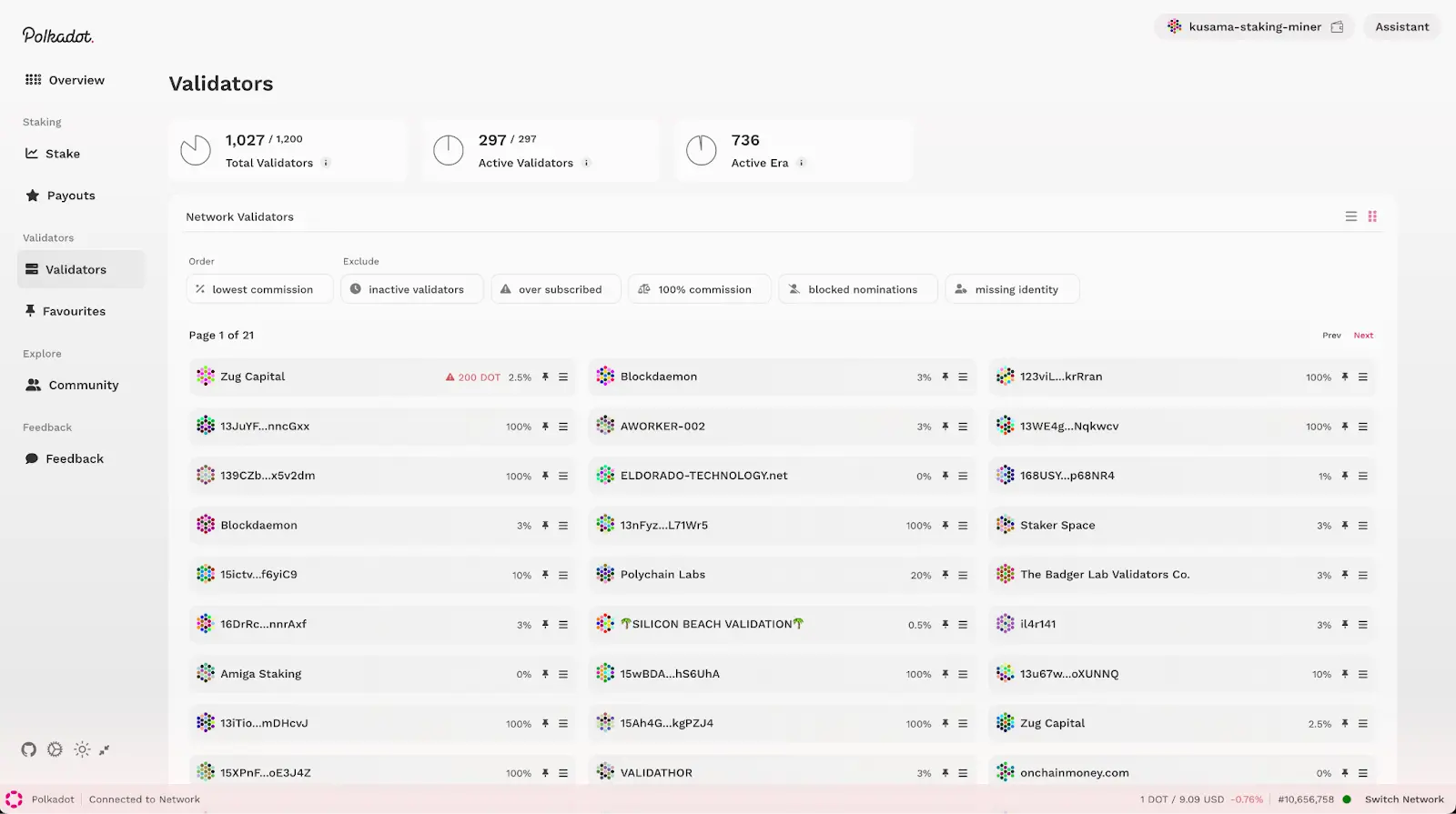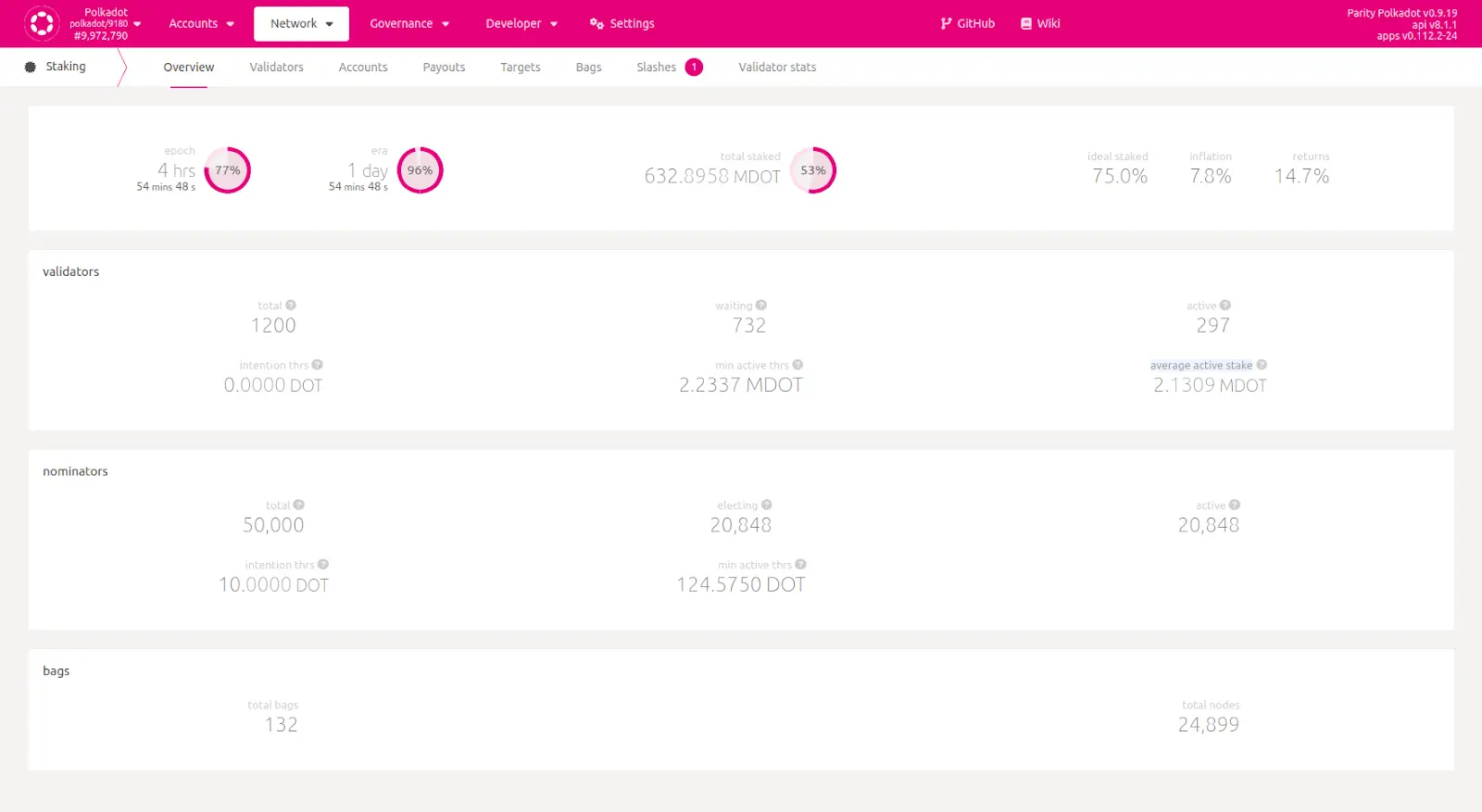Staking Update: May 2022
Polkadot’s nomination pools are live on Kusama! Learn about upcoming changes, bug fixes, and the new staking UI for both nominators and validators.
 By Polkadot•June 21, 2022
By Polkadot•June 21, 2022
By Kian Paimani, Parity Technologies
Notable Contributions: Nomination Pools.
After deploying to Westend, we got numerous valuable bug reports and immediately it gave us some work to do. Most notably:
- The pool can now also `chill` itself. This is important for the pool dismantling scenario
- Pool roles can now be optional. This is HUGE! A pool now can be created, and the pool operator can publicly express that they no longer wish to control a certain aspect of the pool, and leave it only to the governance. See the PR details for more info.
To facilitate those who are interested in building on top of nomination pools: 1
- There’s a dedicated github project for nomination pools now.
- There’s a dedicated element room for support and discussion.
Thinking about contributing? Look for issues in the Substrate repo with the mentor tag, or the NPoS and Elections project. All successful contributions will get an on-chain tip initiated by the staking team.
Also, if you are interested in contributing long-term, there’s a “Staking / PoS Engineer” position available at Parity Technologies, targeting exactly those who will contribute to the staking system.
Nomination Pools: Detailed Release Schedule.
Kusama, as scheduled, has been upgraded to include Nomination pools in the v0.9.22 release. At the time of this writing, 50 pools are already active on kusama and earning rewards. There have also been some tips opened for some of them.
We were initially proposing to deploy the pools on Polkadot in v0.9.23, but some of the aforementioned PRs were not merged in time, this is now scheduled to happen in the v0.9.24 or v0.9.25 release.
More UI Changes
Parity has been working on a new UI for staking, and it is finally ready for users to try out! Be aware that it is in beta phase for now.

Moreover, Thanks to Nikos Kontakis ’s PR, the staking page of the Polkadot.js Apps will be totally revamped soon.

In the new UI, the overview page covers only some metrics and numbers, and the list of validators has been moved to a different page. These metrics aim to answer FAQ that most users deal with, such as:
- How much stake does a validator need to be in the active set?
- How much stake does a nominator need to actively earn rewards?
Since these numbers basically cover the metrics that we had in our “By the Numbers” section here, we decided to remove that section henceforth.











